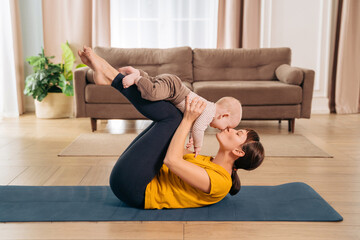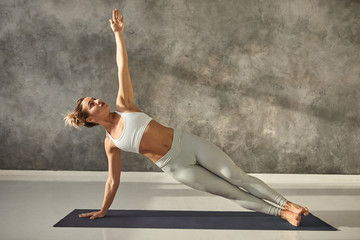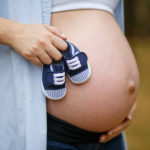Postnatal exercises aid in postpartum recovery, targeting muscles affected by pregnancy. They include gentle abdominal workouts, pelvic tilts, Kegel exercises, walking, swimming, and yoga. These activities help improve posture, relieve back pain, boost energy, and enhance emotional well-being. It is advised to always consult healthcare professionals for safe and personalized exercise recommendations post-pregnancy.
Deep Breathing with Abdominal Contraction:
Deep Breathing with Abdominal Contraction is a beneficial postnatal exercise. lie on your back with your knees bent. Inhale deeply, expand your abdomen, then exhale while contracting your abdominal muscles. This exercise strengthens the core, promoting recovery after childbirth. Additionally, it aids in pelvic floor rehabilitation. Practice regularly to enhance abdominal strength and support. As a low-impact exercise, it’s suitable for postpartum recovery. Incorporating it into your routine can contribute to overall fitness and well-being during the postnatal period. By focusing on proper breathing and engaging the abdominal muscles, you can gradually regain strength and restore stability after pregnancy.
Slide Planking:
Incorporating slide planking into your postnatal exercise routine can effectively target the core muscles and promote postpartum recovery. This dynamic exercise involves assuming a plank position with your feet on sliders or towels, and then smoothly sliding your legs in and out. By engaging the abdominal muscles, particularly the rectus abdominis, and obliques, while also activating the shoulders, arms, and back, slide planking offers a comprehensive workout. It enhances core stability, posture, and overall strength, making it a valuable addition to post-pregnancy fitness routines. Consistent practice can lead to improved physical well-being and enhanced recovery after childbirth.
Kegel Workout:
Kegel exercises are crucial postnatal workouts, centering on the pelvic floor muscles pivotal for childbirth recovery. By contracting and holding pelvic muscles for a few seconds, then releasing, Kegels enhance bladder control, bolster pelvic floor strength, and facilitate postpartum healing. Their incorporation into your regimen fosters improved pelvic health, effectively addressing prevalent post-pregnancy concerns like urinary incontinence and pelvic organ prolapse, ensuring a smoother transition to postnatal wellness.
Regular Stretches:
Engaging in regular stretches postpartum aids in restoring flexibility and alleviating muscle tension. Focus on gentle stretches that target areas prone to tightness, such as the hips, lower back, and shoulders. Incorporate movements like hamstring stretches, hip flexor stretches, and shoulder rolls into your routine. These stretches promote relaxation, improve circulation, and enhance overall mobility, essential for postnatal recovery. Additionally, practicing deep breathing during stretches can further enhance relaxation and promote stress relief. Remember to listen to your body and avoid overstretching to prevent injury during the postnatal period.
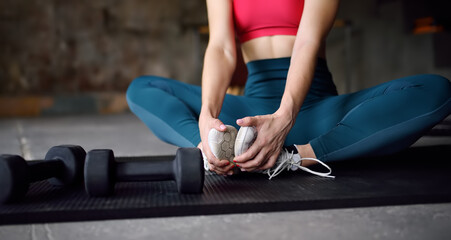
Upper back Exercise:
Engaging in upper back exercises postpartum is crucial for strengthening the muscles that support proper posture and alleviate strain from breastfeeding and carrying your baby. Try exercises like seated rows, bent-over rows, and lat pulldowns using resistance bands or light weights. These exercises target the upper back, shoulders, and arms, promoting better posture and reducing discomfort. Ensure to commence with lighter weights and progressively elevate resistance as your muscular endurance enhances. Including upper back exercises in your routine enhances postnatal recovery and supports overall upper body strength and stability.
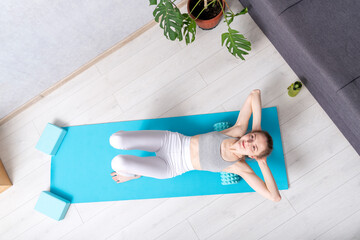
Bridge:
Bridges are effective postnatal exercises targeting the pelvic floor and core muscles. Strengthening these areas aids in postpartum recovery, alleviating lower back pain and improving core stability. Integrating bridges into your workout routine enhances overall well-being after childbirth. Versatile and adaptable, bridges accommodate different fitness levels and postpartum stages, making them an ideal addition to your postnatal fitness regimen. Regular practice of bridge exercises can expedite recovery and help restore strength and function to your body after pregnancy.
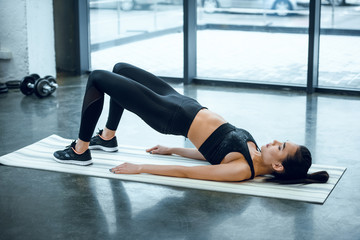
Dancing:
Dancing offers a dynamic and enjoyable postnatal exercise option, promoting cardiovascular health and overall well-being after pregnancy. It allows for gentle movement and flexibility, catering to various fitness levels and preferences. Incorporating dance into your routine enhances mood, reduces stress, and boosts energy levels, vital aspects of postpartum recovery. Whether you opt for a structured dance class or simply groove to your favorite tunes at home, dancing provides a fun and effective way to stay active and reinvigorate your body post-pregnancy.
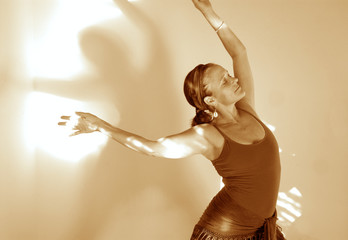
Pelvic tilt:
Pelvic tilts are effective postnatal exercises for strengthening the core and relieving lower back pain commonly experienced after pregnancy. To perform a pelvic tilt, lie on your back with your knees bent and gently tilt your pelvis upward, engaging the abdominal muscles. Hold for a few seconds before releasing. This exercise targets the deep core muscles, including the transverse abdominis, promoting stability and alignment in the pelvis and spine. Incorporating pelvic tilts into your routine can aid in postpartum recovery, improve posture, and alleviate discomfort associated with childbirth.
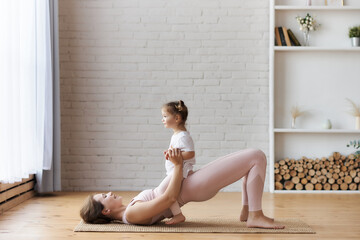
Baby Lift Squats:
Baby lift squats are gentle yet effective postnatal exercises that target multiple muscle groups, aiding in postpartum recovery. Begin by holding your baby securely against your chest or using a baby carrier. Descend into a squat stance, maintaining a straight back and elevated chest. As you rise back up, engage your glutes and thighs. This exercise strengthens the lower body, including the quadriceps, hamstrings, and glutes, while also promoting bonding with your baby. Including baby lift squats into your routine can enhance overall strength and fitness post-pregnancy.

Walking:
Walking is a gentle and accessible postnatal exercise that promotes physical and mental well-being after pregnancy. Begin with short, leisurely walks and gradually increase duration and intensity as your strength improves. This low-impact activity strengthens the legs, boosts cardiovascular health, and aids in weight management. Additionally, walking outdoors provides opportunities for fresh air, sunlight exposure, and stress relief. It’s a versatile exercise that can be enjoyed alone or with your baby in a stroller, fostering bonding while promoting postpartum recovery. Incorporate regular walks into your routine to support overall health and fitness post-pregnancy.

Conclusion
Postnatal exercises are vital for postpartum recovery, aiding in strengthening muscles, improving flexibility, and enhancing overall well-being. From gentle stretches to core-strengthening exercises, these activities promote physical health and mental resilience after pregnancy. By including these exercises in your daily regimen, you can aid your body’s recovery journey and restore strength and energy post-pregnancy.Read more blogs for pregnancy at Buding Star.
More Blogs To Read
7 Pregnancy Tips To Consider For An Expecting Mom
Tips To Make Your Pregnancy Easier And Even More Beautiful
5 most useful things to be done during pregnancy!!
- Understanding Your Baby’s Cry: A Parent’s Mini Guide - June 23, 2025
- Bottle vs. Breastfeeding: What Works for You and Your Baby - June 18, 2025
- 10 Yoga Poses For Kids at Home: Benefits Of Yoga For Kids - June 12, 2025
- Parenting Guide to Child Development: Key Milestones from Birth to 10 Years - June 4, 2025
- Summer Vacation Plans Ideas with Kids - May 27, 2025
- Nutritious Dried Fruit Treats for Toddlers (16–24 Months) - May 25, 2025
- Importance of Screen Time Management for Kids - May 24, 2025
- The 6 Most Common Pregnancy Concerns First-Time Moms Have - May 23, 2025
- Top 10+ Summer Activities for Kids - May 15, 2025
- Busy Family Tips for Raising Healthy Smiles - May 2, 2025

